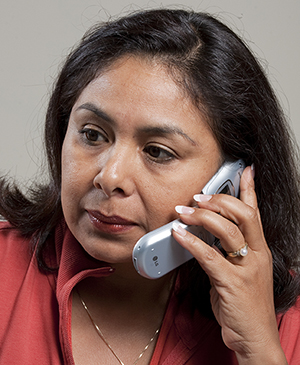First Aid: Heart Attacks
A heart attack (myocardial infarction, or AMI) is an emergency. It can happen suddenly from a blockage or sudden narrowing of your arteries. This reduces blood flow to your heart muscle. It's the result of years of damage to your blood vessels. Over time, fatty substances collect on the walls of the heart's arteries. This is from your genes and lifestyle choices. Many of these can lead to chronic disease. The arteries become narrower as the deposits build up within the artery walls. A heart attack can happen once one of these arteries narrows enough to stop oxygen supply to an area. It can also happen if the buildup breaks open and forms a blood clot.
Step 1. Call 911 NOW!

-
Call 911 for emergency medical services. Getting care right away may keep the heart from stopping. It may help limit damage to the heart muscle to a minimum.
-
When a heart attack is suspected, have the person chew 1 adult dose or 2 low-dose (baby) aspirin tablets. If you are not sure the chest pain is from a heart attack, this can be delayed until the emergency medical services arrive. If the person has been prescribed nitroglycerin, follow instructions from the provider for taking these tablets.
Step 2. Keep the heart attack victim calm
-
Have the victim stop all activities.
-
Reassure the victim. This will keep them calm, so the heart uses less oxygen.
-
Loosen any clothing that may restrict breathing. This includes ties, collars, and belts.
Step 3. Monitor the heart attack victim
-
Start CPR right away if the person shows signs that they have stopped breathing. Or start it if they are becoming unresponsive, or their pulse has stopped.
-
Do CPR by pushing down hard and fast in the center of the chest. Try to allow the chest to recoil or completely expand in between each compression. The goal is to push 100 to 120 times per minute. Emergency dispatchers on the telephone can give instructions on doing CPR.
-
Don't worry about doing rescue breaths during CPR. But if you have the training or are able to do rescue breaths, the goal is to provide 2 breaths for every 30 compressions. Rescue breaths also have been called mouth-to-mouth resuscitation.
-
Continue CPR until emergency professionals arrive. Or continue until the heart attack victim starts to move.
Warning signs of heart attack
The warning signs of a heart attack can include any of these:
-
Chest pain or constriction. This feels like pressure or a belt squeezing the chest.
-
Heaviness in the chest area. This is as if a heavy weight is resting on the chest.
-
Heaviness or pain going to the arms, shoulders, jaw, or teeth
-
Shortness of breath
-
Pale or gray skin tone and sweating. Also cool, damp skin.
-
Feeling dizzy or lightheaded with no other cause
-
Feeling nauseated
-
Symptoms don't go away after taking heart medicine or nitroglycerin
-
Feeling heartburn or indigestion
Online Medical Reviewer:
Callie Tayrien RN MSN
Online Medical Reviewer:
Stacey Wojcik MBA BSN RN
Online Medical Reviewer:
Steven Kang MD
Date Last Reviewed:
9/1/2022
© 2000-2025 The StayWell Company, LLC. All rights reserved. This information is not intended as a substitute for professional medical care. Always follow your healthcare professional's instructions.